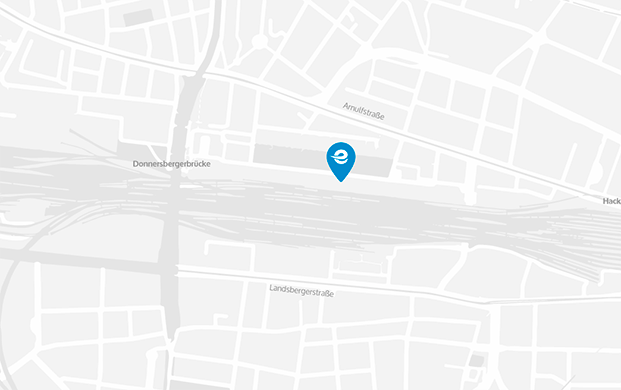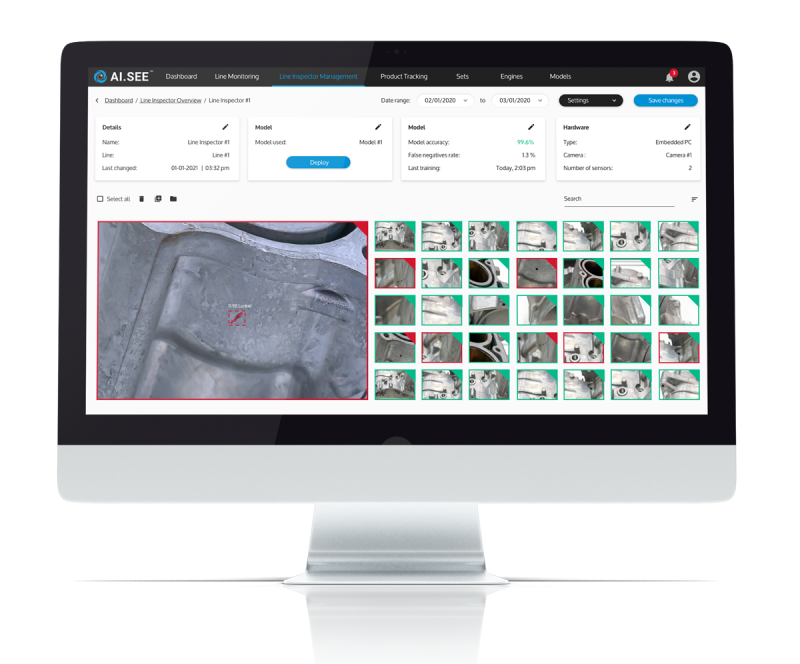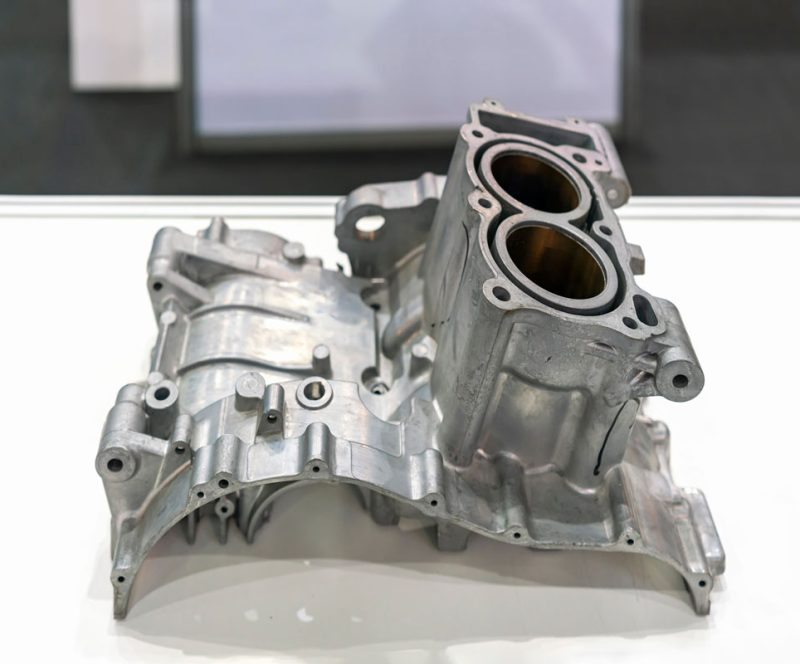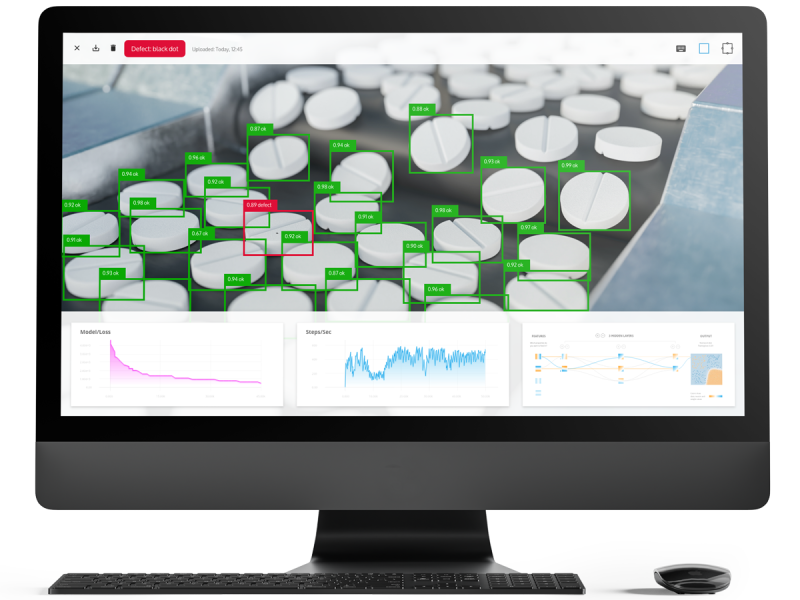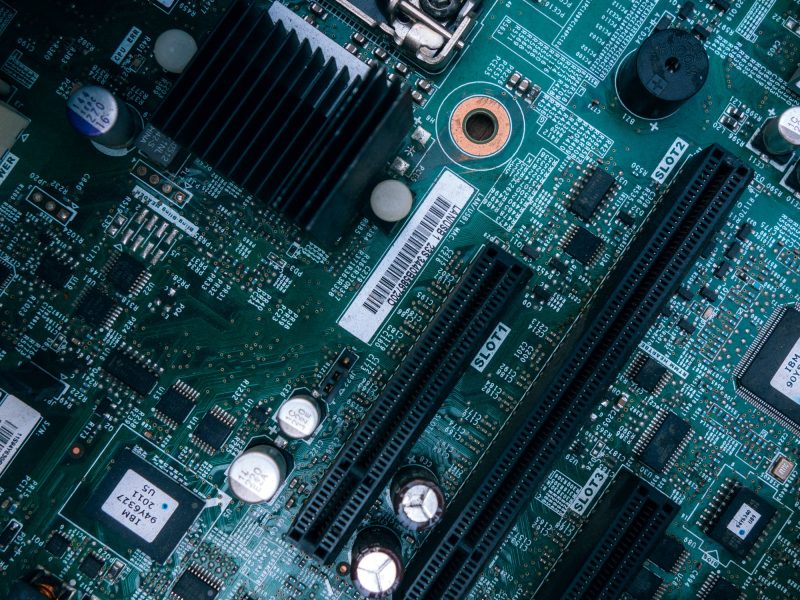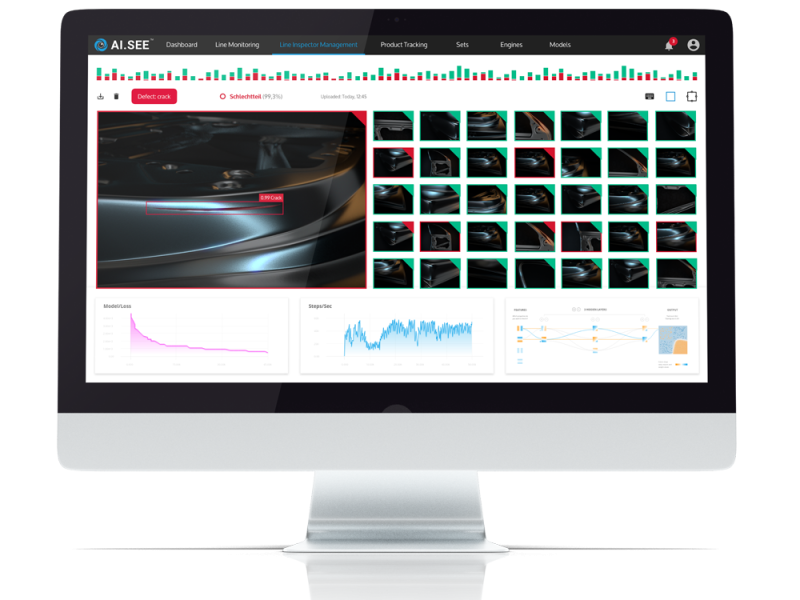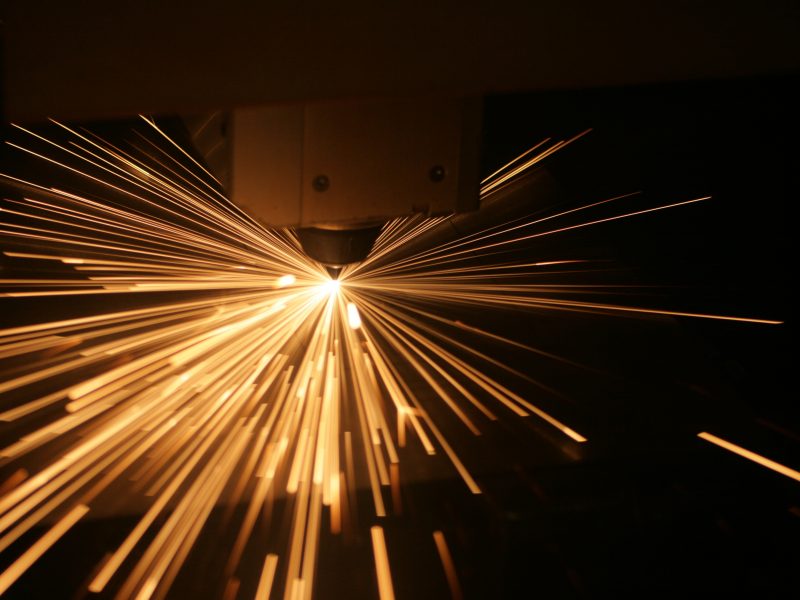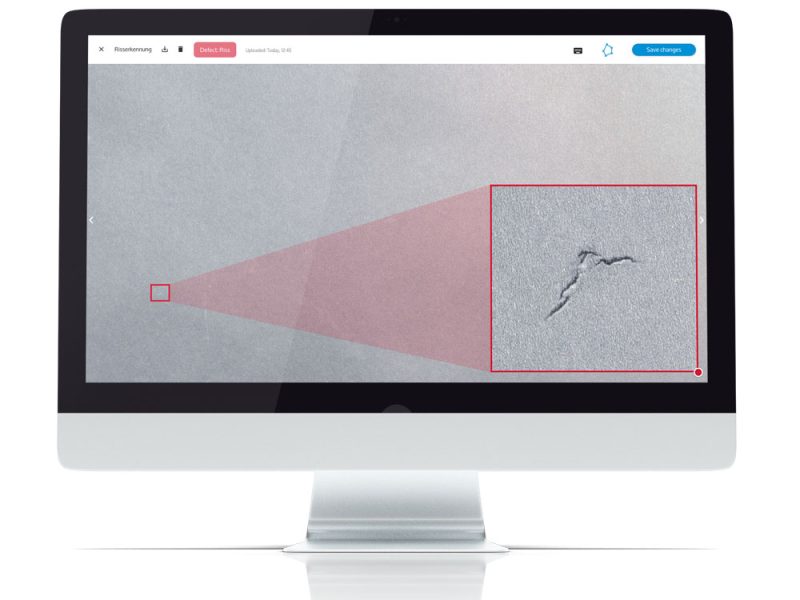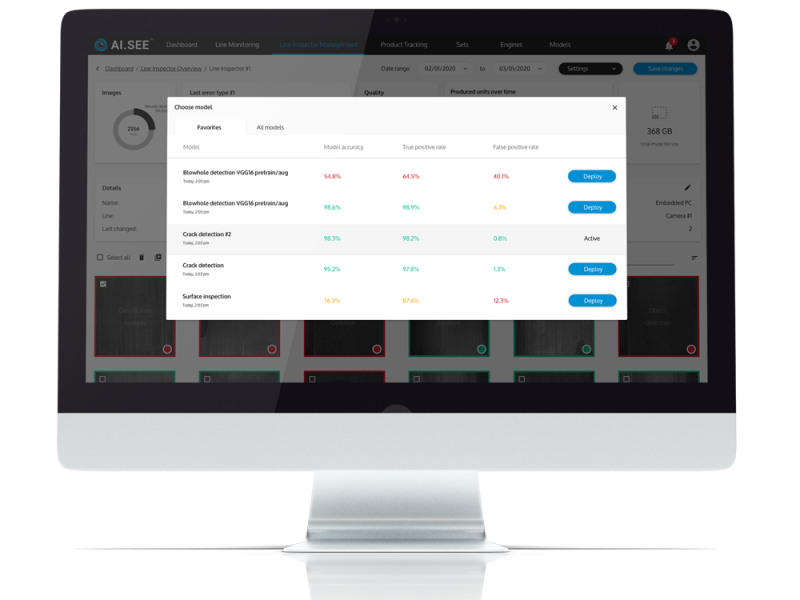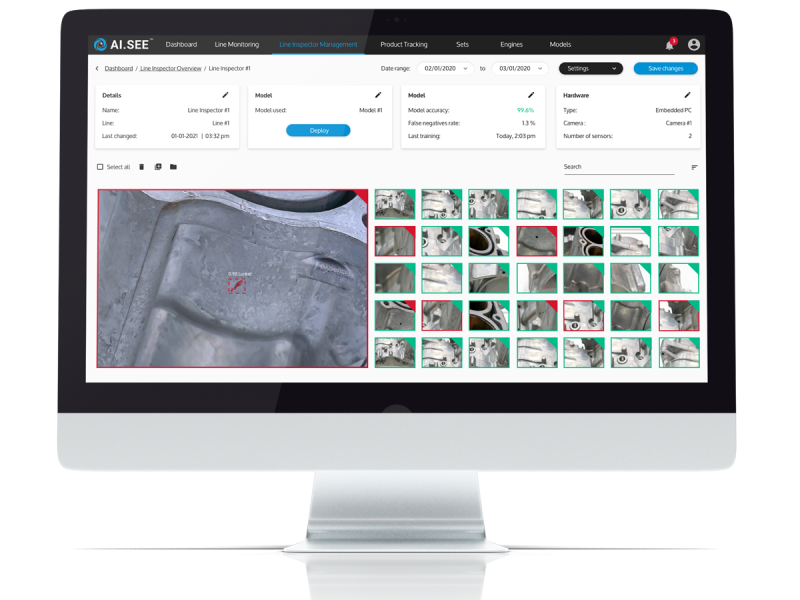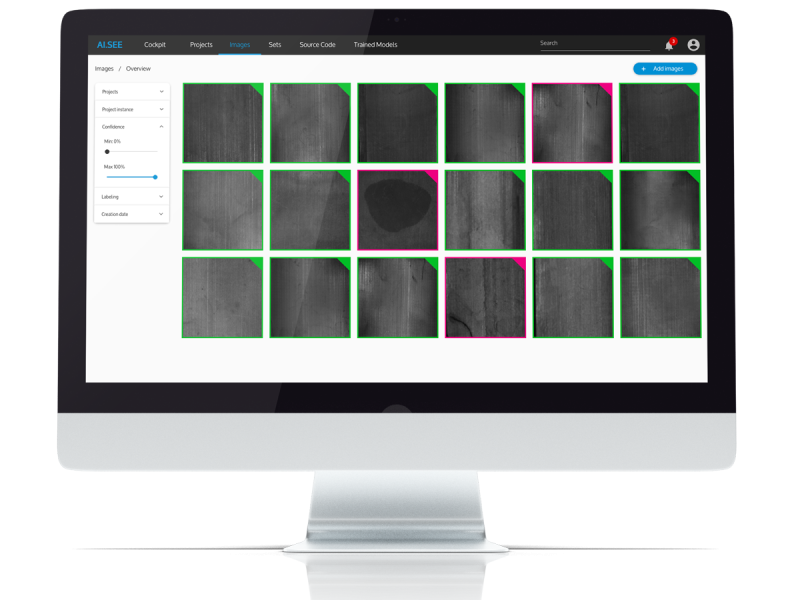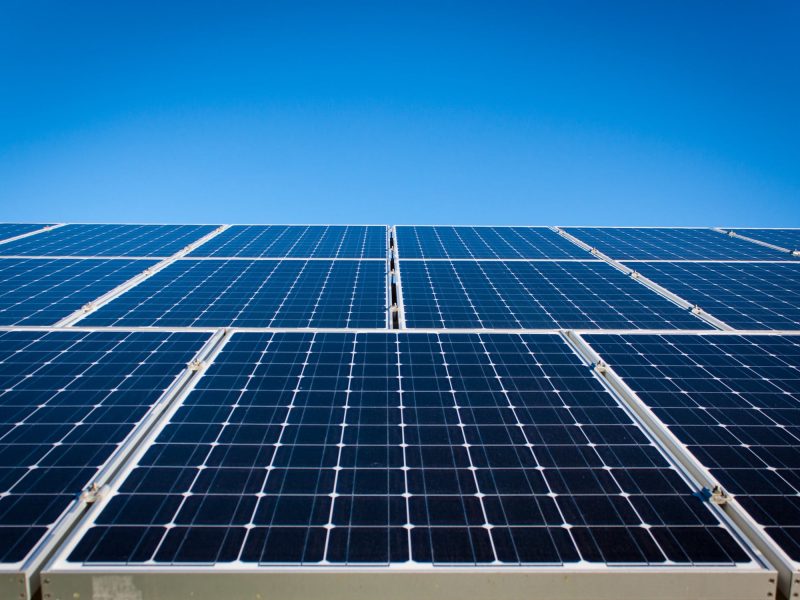During the processing of metals, alloys, concrete, and plastics, especially during casting and the subsequent solidification of the parts, cavities, so-called blowholes, regularly occur due to material shrinkage. If blowholes, e.g., in aluminum, are not detected, structural weaknesses can occur that lead to defects in the finished product. For example, these can cause quality losses or safety issues in the automotive sector, resulting in high costs or worse.
Solutions for Automated Blowhole Detection
- Designing an application that analyzes each part
- Feeding with detailed training data to teach the rejection criteria
- An adaptive learning model that is autonomously evolving
- Extensive data collection and analysis to enable traceability and corrective action (e.g., “blowhole-prone” locations are found and eliminated)
- Implementation of real-time monitoring in the existing system, which any end device can utilize through data collection in the cloud platform
With just a few questions, find out now whether AI. SEE™ can solve your problem:
Blowholes – A Production Defect That Is Difficult to Avoid
In casting melts, the term “blowhole” refers to a cavity formed during the solidification of molded parts, causing a production defect. These cavities occur due to shrinkage of the material during cooling and solidification of the produced casting. Although the susceptibility to the formation of blowholes is generally dependent on the material and can thus be influenced by modifying it, it is impossible to prevent blowholes altogether in most castings. Shrinkage as a casting defect, for example, occurs in all technical casting materials, irrespective of the molding or casting technology selected. Hence, a reliable inspection is mandatory.
Blowholes are a common phenomenon in many manufacturing sectors. So, it can be found in civil engineering, high-voltage engineering, or welding technology, among others. In all cases, though, these are non-genuine blowholes since they are not based on a temperature-dependent volume shrinkage of a melt flow. In addition to metallurgy, volume shrinkage is a prerequisite for blowhole formation in slow-solidifying mineral melts, such as glass or ceramic casting.
Detection and Avoidance of Blowholes in Production
Regardless of the industry or the materials used, blowholes as a production defect is responsible for scrap. As a result, the total loss of machining costs put in for the casting (minus the raw material cost) or cost-intensive reworking can significantly increase production costs. Consequently, a thorough inspection of blowhole-sensitive parts is indispensable. Until now, some outdated methods have continued to be used. Finished parts are visually inspected by employees or checked by tapping with a hammer. Although skilled employees may recognize in this way whether a blowhole is present, external blowholes are still not always immediately recognizable to the naked eye. Density analysis using Archimedes’ principle can provide further information on shrinkage in individual workpieces. In serial production, a manual inspection of workpieces is carried out either randomly or lot-wise. While in the past parts were subject to destructive testing, non-destructive testing methods are becoming more and more common. Yet, employees still carry out these blowhole detection methods.
However, human detection of blowholes entails high labor costs and is therefore not very efficient. Human fitness also leads to a lack of consistency in materials testing, which causes fluctuation in defect detection and, consequently, the quality of the final product. Another problem is that operator-controlled inspection systems often reveal gaps in the documentation and thus in the traceability of the inspected products. However, poorly documented sorting of defective parts makes it impossible to trace the shrinkage and eliminate the causes.
Increase in Production Quality Due to Automatic Blowhole Detection
Automatic blowhole detection yields significant efficiency gains and leads to a considerable increase in production quality.
Each metal component produced must be tested in the production process to avoid quality fluctuations in the final product. Therefore, critical blowholes must be detected with maximum reliability and speed. In addition, identification and documentation of these blowholes are essential. This documentation can then serve as the basis for measures to rectify existing and prevent the formation of new blowholes. For a fully automated blowhole detection solution to improve the existing production process, it should also be possible to integrate the system into the current process. For this purpose, elunic develops modern software solutions for Industry 4.0, which embeds blowhole detection as an automated step in production cost-efficient and fluctuation-free. This will avoid wasting valuable time on employee training, reducing downtime and reject rates. Efficient processes thus facilitate a better quality of the end product along with more robust components.
AI.SEE™ – The Efficient Solution for Blowhole Detection
elunic’s automated quality control AI.SEE™ is a production-specific programmed application that can analyze and inspect each part automatically for blowholes. Thanks to feeding detailed training data, it is possible to create an adaptive learning model that can detect even tiny cavities accurately. Besides size, blowholes also differ in shape and texture. AI.SEE™, therefore, understands the general concept of a blowhole and can thus recognize all types of blowholes. Extensive data collection and analysis in AI.SEE™ enables comprehensive tracking and tracing of blowholes and their rework. Apart from optimizing future components, real-time monitoring through the cloud-based system can provide further quality control opportunities by reducing scrap rates and increasing production efficiency.
Are you interested? Learn more about the numerous possibilities for reliable blowhole detection and prevention with AI.SEE™!
Further Reference Projects
References
Learn more about the project.
